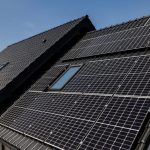In heating, replacing fossil fuels with electricity is relatively simple. Just compare it with a tea kettle. The temperature in the pipes does not exceed 100°C, so instead of making one cup per four, if you have eight guests, put two kettles on. And so on, when the crowd of diners is even greater. The direction towards the green side is therefore obvious – more renewable energy.
Heat pumps in factories
In industry, temperatures must be higher. In the range of plus 100 to almost 200°, progress is made by industrial heat pumps. The American Renewable Thermal Collaboration consortium announced in January '24 that in processes requiring up to 130°, the costs of using industrial heat pumps are no higher than the costs of using gas-fired boilers. After calculations, the RTC experts conclude that pumps can already be 29% cost-competitive. the volume of currently conducted production processes. If they are right, by 2030 pumps will be able to replace traditional sources at temperatures up to 200°C.
One McKinsey expert claims that the pumps are capable of reaching a ceiling of 500°, but in this case it is better to refrain from perhaps premature admiration and look the other way.
Hopes for ecological temperatures around 1000° arising from the movement of electrons driven into motion are placed in “souls”, i.e. home “devices” abandoned for good over half a century ago, when electricity finally found its way into almost all Polish households. We are talking about an iron for ironing that was once heated to red hot in a kitchen stove. You didn't put it all into the fire because the dirt would get stuck on your foot. The heat was provided by the iron “soul”, i.e. a heated insert inserted inside the iron.
In a modern version and according to the idea of the startup Rondo Energy, the casing for the “soul” is also made of metal. In its well-insulated interior, electricity heats ordinary bricks red hot. Thanks to their excellent insulation, the bricks remain extremely hot for several days and can release heat used in various production processes during this time. As in the case of industrial heat pumps, the advantage of this method of heat storage is that there is no need to change the installation – just switch the existing one to a new power source.
The solution proposed by Rondo Energy is quite elementary, which is a huge advantage, but it fails when temperatures much higher than 1000° are required. The Israeli company uses volcanic rock as the “soul”, the Californian Antora is trying to use solid carbon and heats it to 1,800°, and Fourth Powers from Boston is experimenting with liquid tin flowing between graphite bricks, which allows it to reach up to 2,400°. Because tin heated by electricity emits white light, special photovoltaic cells placed inside the heat store produce an additional product in the form of electricity. Clever.
Problematic super hot production processes
None of the above approaches will solve the cardinal issue of super-hot steel, cement and chemical production processes for the climate and environment. Meanwhile, all three product groups consume more than half of industrial heat generation and account for roughly the same proportion of global greenhouse gas emissions.
Although electric arc furnaces without coking coal have been used for smelting steel for a long time, they exist mainly in countries with access to scrap, burdened with a carbon tax that reduces cost differences to the detriment of the arc method, and with stable demand for steel, i.e. to put it briefly – in developed countries. Further stages of switching to this method will reduce pollution, but other producers, mainly from the “new Asia”, will continue to smelt iron from ore as the first stage of obtaining steel, consuming huge amounts of coal and fuel oil.
However, researchers are not giving up. Startup Electra from Colorado, with money provided by many global powers, is planning to dissolve iron ore in chemicals and treat the resulting mixture with electricity. At the end of a process that is coke- and fossil-fuel-free and has almost zero greenhouse gas emissions are clean sheets of metal. However, there is a big “but” – chemicals. Therefore, it seems that the steel industry will remain “dirty” for a long time.
The problem with cement is that harmful emissions result from burning in a rotary kiln, but also from chemical reactions occurring in the production process. However, there is also something happening in cement. Sublime Solutions boasts that it has found a way to obtain the necessary chemicals using electrolysis carried out at room temperature. Innovators claim that this allows “in principle” to get rid of the stove, but unfortunately it seems that the words “in principle” are the key.
In the chemical industry, the work of the Finns from Coolbrook, who are experimenting with the first successes with a device known as a roto-dynamic reactor, deserves at least some attention. The so-called precursors that trigger chemical reactions, and an electric motor drives the device at a rate of 20,000 revolutions per minute. In this way, in December '23, it was possible to carry out the so-called naphtha cracking. Traditional cracking (breaking) carried out in order to obtain the so-called lighter fractions of oil (mainly gasoline) is very energy-intensive and therefore fuel-intensive – so there are some prospects for the future also in this area.
In the clean production of thermal energy, the old-new idea of using nuclear reactors for this purpose is returning, which will make sense when small, so-called modular reactors, which seems to be almost here.
There are estimates among industrialists with expert technical knowledge that new technologies would be able to electrify up to half of “dirty” production processes today. Progress in the field of renewable energy in the West would make electricity for industry almost clean. However, they are present in the form of reluctance among captains of industry, who are not willing to make large investments with technical and other risks, and are afraid of inevitable emergency downtime at the implementation stages or high training costs.



